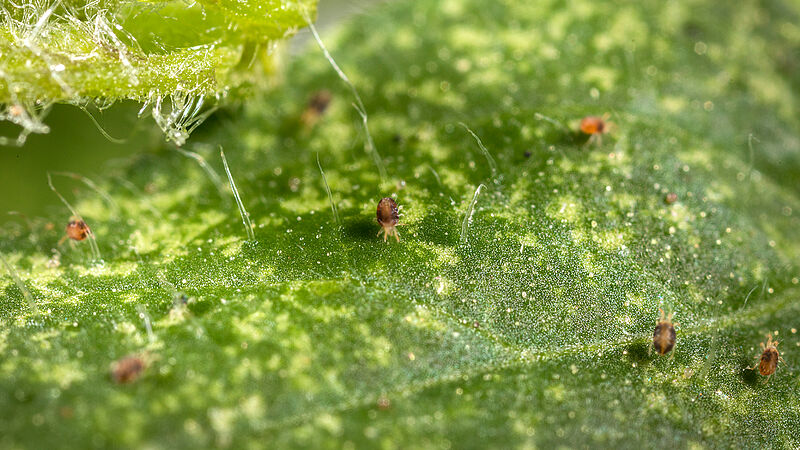Knowledge is critical to ensuring good biological control. And it’s no different when it comes to spider mite – the more you know about this pest, the more effectively you can tackle it. The following is an overview of the key facts about the spider mite.

- Is a spider mite an insect? Nothing could be farther from the truth! It is a tiny spider and lives off plant sap.
-
A spider mite attack is often localized, and you should make sure that you scout affected areas early on. Under the right conditions, a spider mite population can expand very quickly. Look under the leaves – if you can see crawling dots and webs then it’s time to take action.
-
Spider mite damage is easily identified by yellow leaves covered with webs. These leaves will eventually die, so an attack can really affect production!
-
At 25°C, spider mites develop into adults within ten days and are ready to reproduce.
-
A female mite lays 60 eggs, which will produce ten male and 50 female mites. Those 50 female mites will then lay 60 eggs each, which means that the next generation will comprise 2500 females, each of which will lay 60 eggs in under two weeks. By now, we’re already at 150,000...
-
The spider mite loves warm, dry conditions, and the warmer it is, the faster the reproduction.
-
The spider mite tends to appear in the same spots in the crop. In greenhouses, this is typically on plants close to the entrance or where it’s warm. Out in the field, you should pay close attention to warm spots where there is little wind.
-
The variation is great – there are more than 1200 species of spider mite. Some have evolved to ‘specialize’ in just a few crops, while others are nothing more than gluttons!
-
The most comment species is the two-spotted spider mite (Tetranychus urticae), which attacks a wide variety of crops.
-
The spider mite is fast becoming resistant to pesticides and Integrated Pest Management (IPM) is the most effective approach. Natural enemies that can be used against the spider mite are predatory mites, like Spidex and Spical, gall midges (Spidend), green lacewings, and predatory bugs.